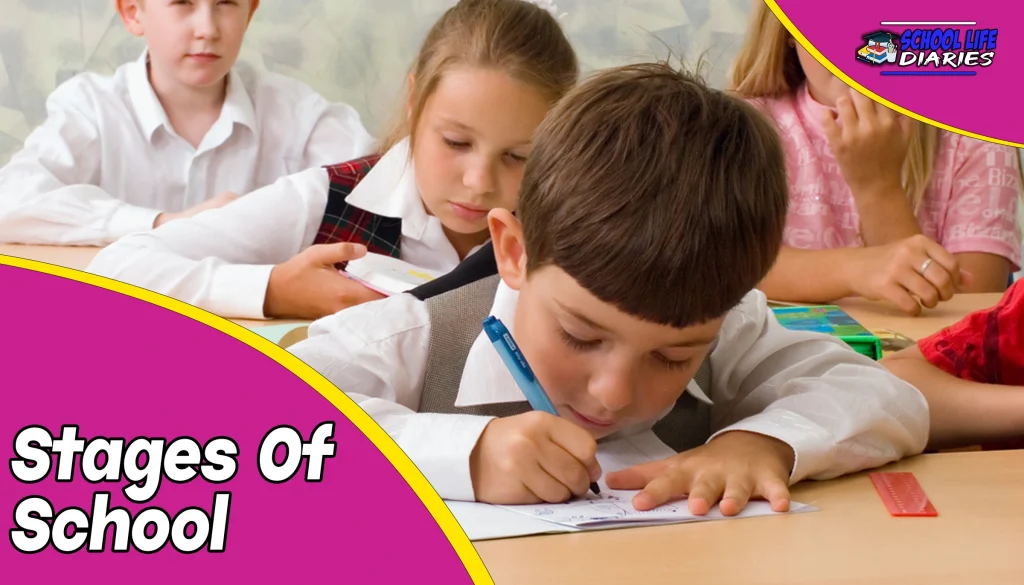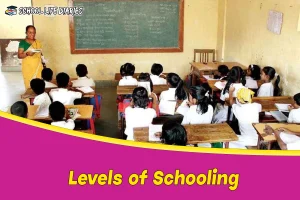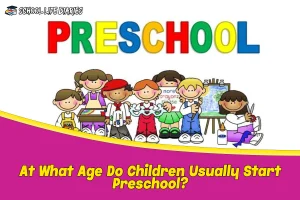Education plays a fundamental role in shaping individuals and societies, providing them with the necessary knowledge and skills to navigate the complexities of life. The stages of school, namely primary, middle, and lower secondary, form the foundation of a child’s educational journey. These stages of the school mark significant milestones in a student’s academic progression and are designed to cater to their evolving needs and abilities.
Recognizing the importance of each stage enables stakeholders within the education system to create an environment that fosters intellectual growth while nurturing individuality during these crucial years of learning.
What Is The Level of Schooling?
The level of schooling refers to the specific stage or phase of education that students progress through, typically consisting of primary, middle, and lower secondary levels. This categorization is important as it provides a framework for organizing and planning educational systems. Each level presents its own unique set of challenges and has a significant impact on the overall development of students.
Challenges at this stage include ensuring that all children have access to quality education regardless of their background or socioeconomic status. Additionally, teachers play a vital role in creating a positive learning environment that fosters curiosity and enthusiasm among young learners. Moving on to the middle school level, students face new challenges as they transition from being primarily taught by one teacher to having multiple subject-specific instructors. This shift requires them to develop stronger organizational skills and adaptability.
Levels of Schooling
This paragraph will discuss the different levels of schooling. Pre-primary education is the first stage of schooling and typically includes preschool and kindergarten programs.
Primary education follows pre-primary education and encompasses grades one through five or six, depending on the country’s educational system. Secondary education is the next level, which usually consists of middle school or junior high school (grades six to eight) and high school (grades nine to twelve).
Pre-primary education
Pre-primary education, often referred to as early childhood education, plays a crucial role in laying the foundation for a child’s future academic and social development. This stage of schooling focuses on children between the ages of three to five years old, preparing them for primary school.
Preschool benefits children by providing them with a structured learning environment that fosters their cognitive, social, emotional, and physical growth. Early childhood education recognizes the importance of play in a child’s development. Play allows children to explore their surroundings, develop problem-solving skills, enhance creativity, and practice social interactions.
Primary Education
Primary education forms the bedrock of a child’s educational journey, providing them with fundamental knowledge and skills necessary for their future academic pursuits. The primary curriculum encompasses a wide range of subjects, including mathematics, language arts, science, social studies, and physical education.
Early education plays a crucial role in a child’s development and has long-term effects on their educational outcomes. Research has shown that children who receive quality early education are more likely to succeed academically in later years. Primary education provides children with a strong foundation in basic literacy and numeracy skills, which are essential building blocks for further learning.
Parents play a vital role in supporting their child’s primary education. They act as the first educators by creating an environment conducive to learning at home. Parents can engage in activities that promote reading habits or assist with homework assignments to reinforce classroom learning.
Secondary Education
Secondary education builds upon the foundation laid in primary education, offering students a broader and more specialized curriculum to further develop their academic knowledge and skills. This stage of schooling is characterized by a transition from the nurturing environment of primary school to a more challenging and independent learning experience. Students face various challenges during this transition period, such as adapting to new teaching methods, increased workload, and higher expectations from teachers.
One key difference between primary and secondary education lies in the curriculum. Secondary education provides students with a wider range of subjects to choose from, allowing them to explore their interests and aptitudes in greater depth. This specialization helps students prepare for future career paths or higher education opportunities.
To support students during this crucial phase, schools often provide additional resources and student support services. These services may include guidance counselors who help students navigate academic choices, emotional support programs that address mental health concerns, or tutoring programs for those struggling with specific subjects.
10th (Matriculation or Secondary) Exam
The (Matriculation or Secondary) Exam is a crucial milestone in a student’s academic journey, challenging their knowledge and skills while evoking a sense of anticipation and anxiety. This exam holds significant importance as it serves as a gateway to higher education and future career prospects.
The matriculation exam assesses students’ understanding and mastery of various subjects, evaluating their ability to apply theoretical knowledge to practical situations. It plays a vital role in determining the academic achievements of students, providing them with an opportunity to showcase their learning outcomes.
The matriculation exam holds immense significance as it not only evaluates students’ knowledge but also prepares them for future endeavors. By undertaking extensive exam preparation, students develop important skills that will serve them well throughout their lives. While exams may be daunting at times, they offer an avenue for personal growth by fostering discipline, critical thinking abilities, resilience, and healthy competition among peers.
12th (Senior Secondary or Higher Secondary) Exam
The 12th (Senior Secondary or Higher Secondary) Exam is a pivotal assessment that evaluates students’ knowledge and abilities, playing a crucial role in shaping their future academic and career prospects. This level of examination marks the end of secondary education and serves as a gateway to higher education or vocational training.
The 12th (Senior Secondary or Higher Secondary) Exam holds great significance as it determines students’ eligibility for higher education opportunities and sets them on their chosen career paths. The grading system ensures a fair evaluation of their abilities while curriculum changes strive to equip them with essential skills for success in today’s world.
At What Age Do Children Usually Start Preschool?
Preschool typically begins for children around the age of three or four, serving as an important early educational step before entering primary school. At this age range, children are ready to explore the world beyond their immediate family and develop social skills in a structured environment.
Preschool provides a safe and nurturing space where children can engage in various activities that foster their cognitive, emotional, and physical development. One of the key benefits of preschool is that it helps children develop important social skills. Through interaction with their peers and teachers, young learners learn how to communicate effectively, share resources, take turns, and cooperate in group settings.
While preschool is a common option for many families, there are alternative options available as well. Some parents may choose to enroll their children in daycare centers or hire nannies who provide similar early learning experiences.
What’s the Transition Like from Primary to Middle School?
Transitioning from the early years of education to the next phase marks a significant shift in students’ academic and social development, as they navigate the path from primary to middle school. They may need to adapt to a new grading system that places greater emphasis on independent research and analytical thinking.
Students enter an environment where they interact with a larger peer group and have more opportunities for extracurricular activities. They may need to navigate new friendships and cliques while also dealing with increased peer pressure. The transition can be particularly challenging for introverted or shy individuals who may struggle with making new friends or finding their place within the social hierarchy.
What Are the Key Differences Between Middle School and High School?
One significant distinction between the two levels of education is the increased level of academic rigor and independence students are expected to demonstrate in high school. Along with the curriculum changes, the high school also brings an increased level of independence for students. In middle school, teachers may closely monitor and guide students through assignments and projects. This transition can be challenging for some students who may struggle with self-discipline or organization skills.
Transitioning from middle school to high school involves several key differences that impact academics as well as social interactions. The shift towards a more rigorous curriculum requires higher levels of independence from students while also demanding stronger organizational skills.
Is Preschool Necessary for a Child’s Development?
Transition:
Having explored the key differences between middle school and high school, we now turn our attention to a topic that is of utmost importance in a child’s early years – preschool. The question at hand is whether preschool is necessary for a child’s development.
Preschool has long been regarded as an integral part of a child’s educational journey, providing numerous benefits that contribute to their overall development. One significant advantage of attending preschool is the opportunity for children to acquire essential social skills.
While preschool undeniably offers valuable advantages, it is important to acknowledge that it may not be the only path toward optimal development in early childhood. Alternatives such as home-based daycare or informal playgroups can also provide opportunities for socialization and cognitive stimulation.
Preschools typically have trained educators who follow age-appropriate curriculum frameworks designed to nurture various aspects of development – physical, cognitive, emotional, and social. Furthermore, the diverse peer environment found in quality preschool settings exposes children to different perspectives and cultures from an early age.
Conclusion
In conclusion, the stages of school can be categorized into primary, middle, and lower secondary levels. Each level plays a crucial role in a child’s educational journey. Preschool serves as an early introduction to formal education, providing children with essential social and cognitive skills that lay the foundation for future learning.
The transition from primary to middle school marks a significant milestone as students move towards more specialized subjects and greater independence in their studies. Middle school is characterized by unique challenges and differences compared to high school. While both involve higher academic expectations, middle school typically focuses on building fundamental knowledge and skills, whereas high school delves deeper into specific subject areas.
Overall, understanding the stages of school provides insight into the sequential progression of education and highlights the importance of each level in shaping a student’s academic journey.














